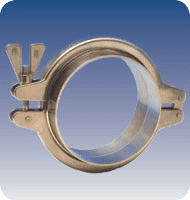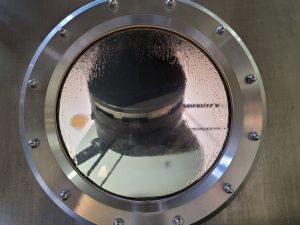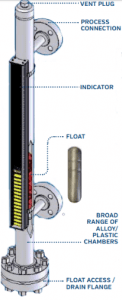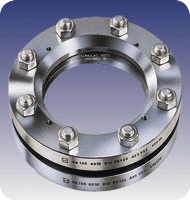 Sanitary fittings, also known as sanitary clamps or hygienic clamps, are clamping devices used to seal two ferrules together in a manner that meets the high hygienic standards of regulatory agencies. Often quick to install, these fittings create secure connections between your equipment without creating sites that can harbor bacteria.
Sanitary fittings, also known as sanitary clamps or hygienic clamps, are clamping devices used to seal two ferrules together in a manner that meets the high hygienic standards of regulatory agencies. Often quick to install, these fittings create secure connections between your equipment without creating sites that can harbor bacteria.
Through their unparalleled efficiency in installation and disassembly times, sanitary clamps allow you to achieve higher levels of joint cleanliness. Critical to pharmaceutical and biotechnology industries, these fittings are perfect for applications where sanitary conditions must be maintained while working on pipe connection maintenance. This is especially true for pharmaceutical applications where cleaning and reconfiguration processes require frequent assembly/disassembly of your components. These processes are under the strict eye of the FDA, where a reliable, leak-free connection is necessary to meet their requirements for sterile process control.
Selecting the Right Sanitary Fitting
Here at LJ Star, we know that in order to get the best results, you need the right products. To make sure you’re getting the best, choosing a sanitary fitting made for your specific application involves a few key considerations:
- Fitting type
- Sizing
- Material selection
Sanitary Fitting Types
A sanitary fitting can be attached to your system in a number of ways. It could fasten with a single bolt, having double pin hinges on the other side, or you could choose a design that fastens with bolts on each side and no hinge. If you’re dealing with certain high–pressure ASME applications, then you might include a third bolt in a hinged design, on the side of the hinge itself.
While some manufacturers may offer sanitary fittings with a single pin hinge, at LJ Star we firmly believe that you need to have at least two pins. This ensures that you have a sturdier and even clamping force.
Sanitary Pipe Fitting Sizing
Simply put, the size of your sanitary fitting is based on the sizes of the ferrules that it is connecting. This has to do with the physical mechanics behind how these parts are mated. Take a look at one of your ferrules. You’ll notice that it’s the beveled surface on the outside diameter of the ferrule that’s connected with the inside diameter of your sanitary fitting. This is the same for the other ferrule as well. When you tighten the clamp, you pull both ferrules together and create a sanitary seal.
Choose too big of a clamp, even just by a fraction of an inch, and you won’t have the sanitary connection you need. That’s because the clamp will be too loose around the ferrules or have openings that bacteria could find their way through. If your clamp is too small, you could warp the ferrules and damage your system.
While clamps should be sized specifically to your ferrules, typical sanitary fittings range from ½” to 12” for the tubing and 4” to 12” for the piping. For LJ Star’s clamps, sizes and dimensions are standardized by ASME BPE to ensure product consistency and reliability. With this standardization, the flange’s outside diameter is the same for 1/2” and 3/4” fittings, as well as for 1” and 1-1/2” fittings. Make sure that you measure the outside diameter of the tubing itself, not the flange, when choosing the size of your gaskets.
Material Selection
Stainless steel is the go-to material for sanitary fittings, and for a good reason. It offers an unrivaled mechanical strength and abrasion resistance, making it a great option for even the most challenging applications.
The main choice here is whether to go with 304 or 316 stainless steel. 304 stainless is cheaper and easier to get, but 316 stainless has superior corrosion resistance. Make sure to choose 316 stainless steel if your application involves any of the following:
- Contact with superheated water or aggressive chemicals like hydrofluoric acid and concentrated phosphoric acid
- Abrasive cleaning methods
- Rapidly changing temperatures
Getting Started
Once you have the type of sanitary fitting you need, getting and keeping your system up-and-running with your new clamp is all about the three Is:
- Inspect
- Install
- Identify
Inspect
A proper inspection lets you see if your clamps might have any contamination issues. Look closely at your ferrules for gasket residue or surface imperfections. You’ll want to check the clamp as well as you look for deformities, loose hinges, or damaged threads.
Install
With the proper training, and a good set up instructions from your clamp’s manufacturer, installing a sanitary fitting should be a seamless process. Just make sure the clamp and gasket are aligned and fitted, and not over or under torqued during installation.
Identify
Like everything worth doing, you should always make sure that things went according to plan. After installation, you’ll want to examine your sanitary fitting to ensure that it was installed properly. Look for problems associated with contamination or misalignment. These issues can not only occur from improper installation techniques, but also from system vibration or other operational hazards. That’s why regular maintenance and system checks are important as well!
The Right Fit
LJ Star offers a number of different sanitary fittings and clamps to best suit your specific needs. Click here to take a look at our online selection guide.


